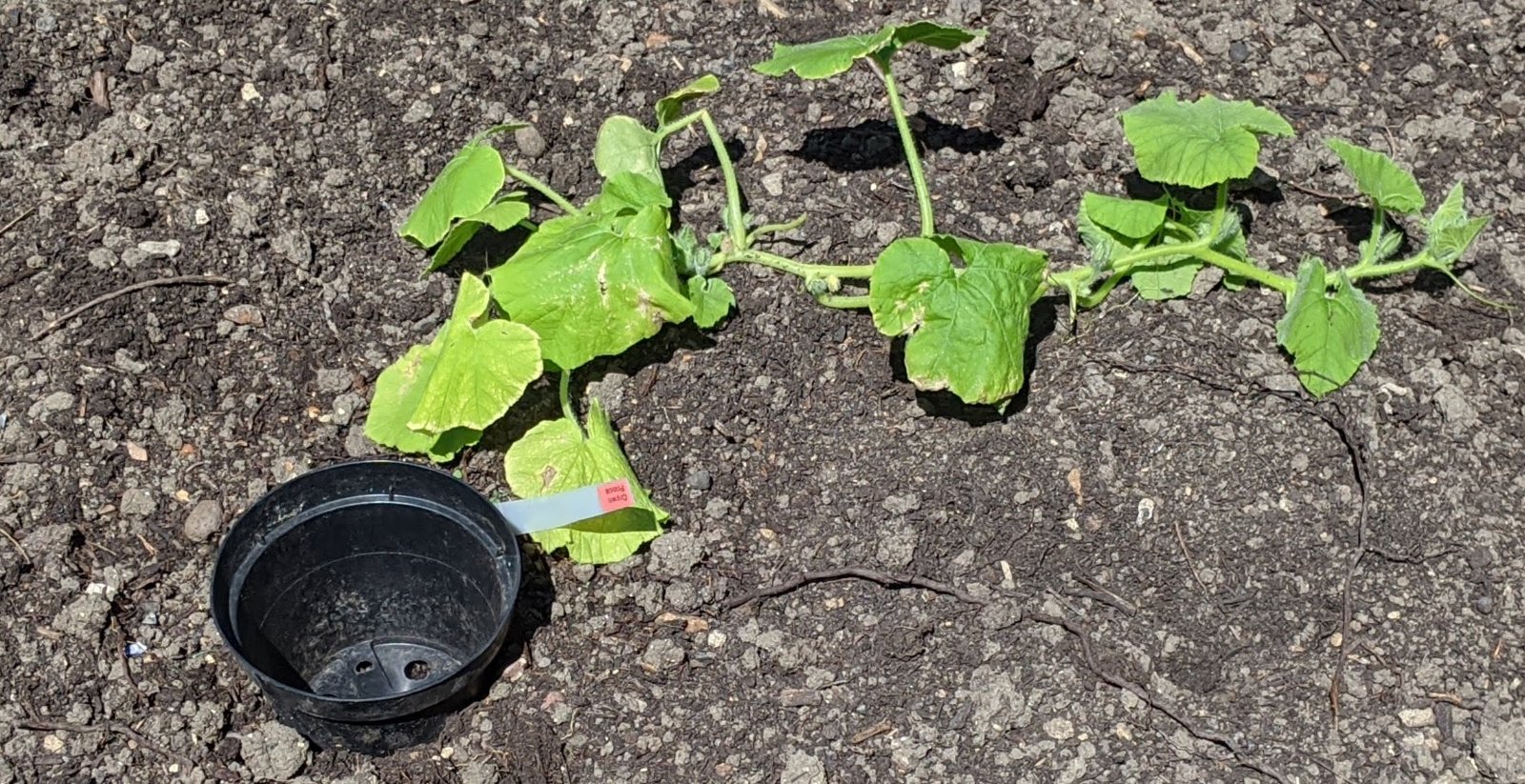Provided you have a bit of space in the sun then courgettes and pumpkins are one of the easiest and most rewarding crops to grow. With a bit of space I actually mean quite a bit of space. Ideally each courgette and pumpkin plant has a square meter each (3 x 3 feet), but of course it’s also possible to grow them in less space.
Unfortunately you can’t grow just the one plant. Well, you could if you have a neighbour who grows a few plants, but failing that you need to grow a minimum of four plants. Less than four plants means there is little chance for the flowers to be pollinated. They need multiple visits from bees or other insects to form a viable fruit and each flower is only open for one day. So, if you are short of space, my suggestion would be to give two plants a lot of space and squeeze another two somewhere on the side. They will not enjoy that, but they will produce male flowers, which really is the only thing you need so they can pollinate the female flowers on the two courgettes or pumpkins that do have space and you harvest your crop from just those two. Most pumpkins (cucurbita pepo) can pollinate courgettes and vice versa, so you can plant a mix.
Sow your seeds in either small pots or toilet rolls with (peat-free!) compost on the windowsill anytime from March till early June. Repot your plants when large enough to handle, harden off before you put them outside permanently (by putting them out during the day and inside at night for a week to 10 days). Protect them from frost if you have put them outside already when frosts are forecast. In Cambridgeshire it’s usually safe to plant them out when the Chelsea Flowershow is on (third week of May). This year again we had quite a bit of frost in the middle of May, but I also remember an early June frost, so keep an eye on the forecast.
When planting them out, put a flowerpot or cut off plastic bottle next to your plant, so you can direct water and/or liquid feed better to the roots. It’s also a good idea to put some seaweed, chicken manure pellets, compost or well-rotted manure in the ground before you plant them out.
Slugs and snails can be an issue. There are many ways that you can deal with this without resorting to harmful slug pellets. Putting something down like a terracotta pot, piece of wet wood or a grapefruit half and then getting rid of all those that hide under them is a first step. Torch-lit expeditions in the evening is another one. Of course making sure that hedgehogs and toads have a way to get in and out of your garden is another good long-term strategy.
Once planted out in the ground, you’ll find that your courgette and pumpkin plant will start to grow well and you’ll soon be able to pick your first one in case of courgettes or you’ll see your first pumpkin swelling up.
Keep watering them well and if you can give them every now and again a liquid feed like tomato, seaweed or comfrey that may also help. Keep picking your courgettes at your preferred size, which probably isn’t marrow size. If you end up with a marrow, there is a great recipe for ginger-lemon marrow jam! You can also eat the male flowers (fried in beer batter, yum!). In case of courgettes, after a few months the plant gets exhausted and will start to look awful and often gets some powdery mildew. Usually this is the time that you are fed up with eating courgettes, so you may well be quite relieved to pull it up.
In the case of pumpkins, pick them with quite a bit of stalk once they have matured and the skin has changed colour (lift them up and you’ll see that where they have touched the ground, the colour is different). Leave them for a week or two in a hot conservatory or greenhouse to cure, or just outside on the ground in the sun provided it’s not freezing.
Some of my favourite varieties:
Courgette: Any. Some have a bit tougher skin than others. My experience is that most yellow ones have tough skin.
Tromba di Albenga: A summer squash that likes to climb, so trail the vines over a frame. It produces trumpet like fruit, that tastes like courgette when young and once mature will keep till Christmas.
Crown Prince: Sweet pumpkin flesh. Divine when filled with cream and gruyere and baked in the oven till soft. Also keeps till April!




